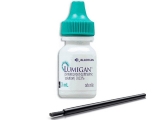Pharmacy topics presentation ideas
When it comes to presenting on pharmacy topics, it's important to think outside the box and come up with creative ideas that will engage your audience. Whether you're presenting to a class of pharmacy students or professionals in the industry, these 10 presentation ideas will help you stand out and make a lasting impression.
1. The Future of Pharmacy: Explore the advancements in technology and how they are shaping the future of the pharmacy industry. Discuss topics like robotics, artificial intelligence, and telemedicine, and how they are impacting the way drugs are dispensed and patient care is delivered.
2. Alternative Medicine: Take a deep dive into the world of alternative medicine, exploring topics like herbal remedies, acupuncture, and homeopathy. Discuss the benefits and potential risks of these therapies and their integration into traditional pharmacy practice.
3. Medication Adherence: Investigate the issue of medication non-adherence and explore strategies to improve patient compliance. Discuss the impact of non-adherence on patient outcomes, healthcare costs, and ways pharmacists can play a role in increasing adherence rates.
4. Precision Medicine: Delve into the concept of precision medicine and how it is revolutionizing the way drugs are developed and prescribed. Discuss personalized medicine, pharmacogenomics, and how genetic testing is being used to tailor treatments to individual patients.
5. Pharmaceutical Marketing: Examine the strategies used by pharmaceutical companies to market their products. Discuss the ethical implications of direct-to-consumer advertising and the influence of marketing on prescribing habits.
6. Pharmacy Automation: Explore the world of pharmacy automation and its impact on the profession. Discuss topics like medication dispensing robots, automated prescription filling systems, and the benefits and drawbacks of these technologies.
7. Drug Pricing and Access: Investigate the issue of rising drug prices and its impact on patient access to medication. Discuss the factors that contribute to high drug prices and explore potential solutions to increase affordability and access.
8. Over the Counter (OTC) Drugs: Teach your audience about the different types of over-the-counter drugs available and their appropriate use. Discuss common misconceptions, potential drug interactions, and the importance of reading labels and seeking pharmacist advice.
9. Pharmacy Ethics: Dive into the ethical dilemmas that pharmacists face in their daily practice. Explore topics like medication errors, patient confidentiality, and the pharmacist's role in refusing to dispense certain medications based on personal beliefs.
10. Pharmacy Career Paths: Provide insights into the various career paths available in the pharmacy profession. Discuss options beyond retail pharmacy, such as clinical pharmacy, research, academia, and industry, and the skills and education required to pursue these paths.
By choosing one of these creative pharmacy topics presentation ideas, you'll not only educate your audience but also spark their interest and create a memorable presentation. Remember to use engaging visuals and interactive elements to enhance your presentation and keep your audience captivated throughout.
Role of Pharmacists in Improving Patient Care
1. Medication Management
Pharmacists play a vital role in improving patient care through their expertise in medication management. They have a deep understanding of various medications, their interactions, and potential side effects. Pharmacists work closely with patients and healthcare providers to ensure safe and effective use of medications. They provide counseling and education to patients, helping them understand their medications, proper dosages, and potential risks. This proactive approach to medication management improves patient compliance and reduces the likelihood of medication errors.
2. Chronic Disease Management
Pharmacists also play a significant role in managing chronic diseases, such as diabetes, hypertension, and asthma. They work collaboratively with healthcare teams to monitor patients' conditions and provide appropriate medication therapy. Pharmacists can conduct medication reviews, monitor patients' adherence to treatment plans, and make recommendations for medication adjustments. Their involvement in chronic disease management helps optimize patient outcomes, prevent complications, and improve overall quality of life.
3. Immunizations and Preventive Care
Pharmacists have the authority to administer immunizations and provide preventive care services to patients. They can administer vaccines for diseases such as influenza, pneumonia, and shingles, helping protect vulnerable populations and preventing the spread of infectious diseases. Pharmacists also play a role in providing education and counseling on preventive measures, such as smoking cessation, weight management, and proper nutrition. By offering these services, pharmacists contribute to the overall well-being and preventive care of the community.
4. Medication Safety
Ensuring medication safety is a crucial aspect of improving patient care, and pharmacists play a central role in this area. They are responsible for verifying medication orders, checking for potential drug interactions, and identifying possible medication errors. Pharmacists collaborate with healthcare providers to prevent medication errors, develop protocols for safe medication use, and implement medication safety initiatives. By focusing on medication safety, pharmacists contribute to reducing adverse drug events and improving patient outcomes.
5. Patient Education and Counseling
Pharmacists are well-positioned to provide patient education and counseling on various health topics. They can explain medication instructions, possible side effects, and answer patients' questions related to their medications. Pharmacists also provide guidance on lifestyle modifications and offer support for patients with complicated medication regimens. Patient education and counseling by pharmacists promote patient empowerment, enhance medication adherence, and improve overall health outcomes.
In conclusion, the role of pharmacists in improving patient care is multifaceted and essential. Through medication management, chronic disease management, immunizations and preventive care, medication safety, and patient education and counseling, pharmacists contribute significantly to enhancing patient outcomes and overall healthcare quality.
Innovative Pharmacy Technologies for Medication Safety
1. Automated Dispensing Systems
Automated dispensing systems (ADS) are innovative pharmacy technologies that help improve medication safety by reducing medication errors and enhancing accountability. These systems allow for accurate medication dispensing and tracking, minimizing the risk of dispensing errors. ADS also provide real-time inventory management, ensuring that medications are always available and reducing the chances of medication shortages or stockouts.
2. Barcode Medication Administration
Barcode medication administration (BCMA) is another advanced technology that enhances medication safety in pharmacies. BCMA uses barcode scanning to verify the medications being administered to patients, ensuring that the right medication is given to the right patient at the right time. This technology helps prevent medication errors, such as wrong doses or wrong medications, and improves patient outcomes.
3. Electronic Prescribing
Electronic prescribing (e-prescribing) is a digital technology that allows healthcare providers to send prescriptions electronically to pharmacies. This technology improves medication safety by reducing errors associated with handwritten prescriptions. E-prescribing systems also provide clinical decision support, alerting healthcare providers to potential drug interactions or allergies. This helps ensure that patients receive the most appropriate and safe medication for their conditions.
4. Medication Reconciliation Systems
Medication reconciliation systems are designed to improve medication safety during transitions of care, such as hospital admissions or discharges. These systems help identify and resolve discrepancies between a patient's current medication regimen and the medication orders from different healthcare providers. By ensuring accurate and up-to-date medication information, medication reconciliation systems help prevent errors, such as duplicate prescriptions or omissions.
5. Remote Medication Monitoring
Remote medication monitoring technologies enable healthcare providers to remotely monitor and manage patients' medication adherence. These systems often involve the use of smart devices or wearable technologies that track patients' medication intake and provide reminders when doses are missed. By promoting medication adherence, remote medication monitoring technologies help improve patient outcomes and reduce the risk of medication-related complications.
6. Medication Management Apps
Medication management apps are smartphone applications that help patients manage their medications effectively. These apps enable users to create medication schedules, set reminders for doses, track their medication intake, and receive medication-related information. By empowering patients to take control of their medication regimens, medication management apps contribute to medication safety by promoting adherence and reducing medication errors.
7. Smart Medication Packaging
Smart medication packaging technologies use innovative packaging designs and features to improve medication safety. These include blister packs with individual compartments for each dose, color-coded packaging for easy identification, and integrated electronic tracking systems. Smart medication packaging helps patients and healthcare providers accurately identify and manage medications, reducing the risk of medication errors and improving medication safety.
8. Telepharmacy Services
Telepharmacy services involve the remote provision of pharmacy services, such as medication dispensing and counseling, through telecommunication technologies. These services are particularly beneficial in remote or underserved areas where access to a physical pharmacy may be limited. Telepharmacy helps improve medication safety by ensuring that patients have access to necessary medications and pharmacist support, regardless of their geographic location.
9. Medication Error Reporting Systems
Medication error reporting systems are digital platforms that facilitate the reporting and analysis of medication errors. These systems allow healthcare providers to document medication errors, identify contributing factors, and implement corrective measures. By promoting a culture of reporting and learning from errors, medication error reporting systems contribute to continuous improvement in medication safety practices.
10. Artificial Intelligence in Pharmacy
Artificial intelligence (AI) technology is increasingly being used in pharmacy settings to improve medication safety. AI systems can analyze vast amounts of patient data to identify patterns and trends, predict medication-related risks, and provide clinical decision support. These technologies help healthcare providers make informed decisions, optimize medication therapies, and reduce the likelihood of adverse drug events.
Exploring the Future of Personalized Medicine
Personalized medicine is an emerging field that aims to tailor medical treatments to individual patients based on their genetic makeup, lifestyle, and other personal factors. As advancements in technology and our understanding of the human genome continue to grow, the future of personalized medicine holds great promise in improving patient outcomes and revolutionizing healthcare.
1. Genomic Medicine
One of the key areas of personalized medicine is genomic medicine, which focuses on using an individual's genetic information to guide medical decisions. Through advancements in DNA sequencing technology and bioinformatics, scientists can now analyze a person's genetic code to identify potential disease risks, determine the effectiveness of certain medications, and develop personalized treatment plans.
2. Pharmacogenomics
Another important aspect of personalized medicine is pharmacogenomics, which involves studying how an individual's genes affect their response to medications. By understanding a person's genetic variations, healthcare providers can predict their likelihood of experiencing adverse drug reactions or determine the most effective dosage for a particular medication. This personalized approach can help avoid unnecessary side effects and improve treatment outcomes.
3. Precision Diagnostics
Advancements in diagnostic technologies are also driving the future of personalized medicine. With the development of high-throughput screening methods and molecular diagnostics, healthcare providers can now identify specific genetic markers and biomarkers that are associated with certain diseases. This allows for early detection, accurate diagnosis, and targeted treatment strategies tailored to each individual patient.
4. Telemedicine and Remote Monitoring
Telemedicine and remote monitoring solutions are becoming increasingly important in personalized medicine. By leveraging digital technologies, healthcare providers can remotely monitor patients, collect real-time health data, and make informed treatment decisions. This allows for personalized care delivery, improved patient engagement, and the ability to intervene early in case of any health issues.
5. Ethical and Privacy Considerations
As personalized medicine continues to advance, ethical and privacy considerations become paramount. With the increased collection and analysis of personal genetic data, there is a need to ensure the privacy and security of this sensitive information. Additionally, ethical questions arise regarding the use and disclosure of genetic information, as well as the potential for discrimination based on genetic traits.
In conclusion, the future of personalized medicine holds immense potential in revolutionizing healthcare. With advancements in genomics, pharmacogenomics, precision diagnostics, telemedicine, and ethical considerations, personalizing medical treatments based on individual characteristics will become more commonplace, leading to improved patient outcomes, enhanced disease prevention and management, and ultimately, a more personalized and efficient healthcare system.
Overcoming Challenges in Pharmacy Education
The Lack of Practical Experience
One of the major challenges in pharmacy education is the lack of practical experience for students. While theoretical knowledge is important, hands-on experience is crucial for pharmacy students to develop the necessary skills and confidence in their future profession. Overcoming this challenge requires implementing practical training opportunities, such as internships or rotations, where students can apply their knowledge in real-life pharmacy settings. Additionally, simulation programs and interactive learning methods can help bridge the gap between theory and practice.
Keeping Up with Advancements in Pharmaceutical Science
The field of pharmacy is constantly evolving, with new medications, treatments, and technologies being developed. This poses a challenge for pharmacy education, as it can be difficult to keep up with the latest advancements in pharmaceutical science. To address this challenge, pharmacy educators should prioritize staying updated on current research and incorporating this knowledge into the curriculum. Collaboration with industry experts and professionals can also provide valuable insights into the latest trends and developments in the field.
Ensuring Patient Safety and Ethical Practice
Pharmacy education not only requires teaching students about medications and their effects, but also about the importance of patient safety and ethical practice. This challenge can be overcome by implementing courses and training programs that focus on ethics and professionalism in pharmacy. Students should be educated on topics such as patient confidentiality, medication errors, and the ethical responsibilities of a pharmacist. Practical case studies and discussions can help students develop critical thinking skills and make ethical decisions in real-world scenarios.
Adapting to Technological Advances
The advancement of technology has had a significant impact on the field of pharmacy, with the introduction of electronic health records, telepharmacy, and other digital tools. Pharmacy education must adapt to these technological advances to ensure that students are prepared for the future of the profession. Incorporating technology into the curriculum, such as virtual simulations or online learning platforms, can help students familiarize themselves with modern pharmacy practices. Additionally, providing training on how to use digital tools effectively and securely is essential to prepare students for the changing healthcare landscape.
Diversity and Cultural Competence
In a diverse society, pharmacists must be equipped with cultural competence to effectively serve patients from various backgrounds. Pharmacy education faces the challenge of providing students with the necessary knowledge and skills to deliver culturally sensitive care. To overcome this challenge, curricula should incorporate courses on cultural competence, diversity, and inclusion. Students should be exposed to different cultural practices, beliefs, and healthcare disparities to develop an understanding and appreciation for diversity in patient care.
Collaboration and Interprofessional Education
Pharmacists often work as part of a healthcare team, requiring collaboration with other healthcare professionals. Pharmacy education should focus on promoting interprofessional education to prepare students for effective teamwork and communication. Creating opportunities for collaboration with other healthcare students, such as shared coursework or joint projects, can help students develop the necessary skills for interdisciplinary patient care. Emphasizing the importance of teamwork and interprofessional communication in the curriculum can also help overcome the challenges of collaboration in pharmacy practice.
Overall, overcoming the challenges in pharmacy education requires a proactive approach that integrates practical experience, keeps up with advancements in pharmaceutical science, prioritizes patient safety and ethical practice, adapts to technological advances, fosters cultural competence, and promotes collaboration with other healthcare professionals. By addressing these challenges head-on, pharmacy education can continue to produce competent and well-rounded pharmacists who can contribute to the improvement of patient care.
Impact of Pharmacogenomics on Drug Therapy
Introduction
Pharmacogenomics is the study of how an individual's genes impact their response to drugs. It involves analyzing the genetic variations that influence drug metabolism, drug efficacy, and drug toxicity. This field of research has the potential to revolutionize drug therapy by allowing for personalized treatment approaches.
Benefits of Pharmacogenomics in Drug Therapy
1. Customized Treatment Plans: Pharmacogenomics enables healthcare providers to tailor drug therapies to individual patients based on their genetic profiles. By identifying genetic variations that affect drug response, healthcare professionals can better predict drug efficacy and select the most effective treatment for each patient.
2. Improved Safety: Some genetic variations can increase an individual's risk of adverse drug reactions. Pharmacogenomics can help identify these genetic markers, allowing healthcare providers to avoid prescribing medications that may have harmful effects on certain patients. This personalized approach to drug therapy can significantly enhance patient safety.
3. Enhanced Efficacy: Certain genetic variations can impact a drug's effectiveness in treating specific diseases or conditions. By considering a patient's genetic profile, healthcare providers can select medications that are more likely to be effective, leading to improved treatment outcomes and better patient satisfaction.
Challenges and Limitations
1. Genetic Variability: The human genome is highly complex and diverse, with numerous genetic variations that can impact drug response. Identifying and characterizing all relevant genetic markers can be challenging, and our current understanding of the genetic basis of drug response is still evolving.
2. Cost and Accessibility: Pharmacogenomic testing can be expensive and may not be widely available, especially in resource-limited settings. The high costs associated with genetic testing and the need for specialized personnel and equipment can limit the widespread adoption of pharmacogenomics in routine clinical practice.
3. Ethical Considerations: Pharmacogenomic testing raises ethical questions related to patient privacy, consent, and potential discrimination based on genetic information. Protection of patient data and ensuring equitable access to pharmacogenomic testing are important considerations for the ethical implementation of this technology.
Conclusion
Pharmacogenomics holds immense promise for improving drug therapy by enabling personalized treatment plans based on individual genetic profiles. While there are challenges and limitations to overcome, ongoing research and advancements in this field are likely to pave the way for a future where drug therapy is optimized for each patient's unique genetic makeup.
Role of Pharmacists in Addressing the Opioid Epidemic
The opioid epidemic has become a major public health concern in many countries around the world. Opioids, including prescription painkillers, heroin, and synthetic opioids like fentanyl, have led to a significant increase in overdose deaths and addiction. Pharmacists play a crucial role in addressing this epidemic through their expertise in medication management and their close interaction with patients.
Education and Prevention: Pharmacists have a key role in educating patients and the public about the risks and proper use of opioids. They can provide information on the potential side effects and addictive nature of these medications, as well as guidance on how to safely store and dispose of unused opioids.
Screening and Identification: Pharmacists can contribute to identifying patients who may be at risk for opioid misuse or addiction. Through their regular interactions with patients, they can assess for signs of opioid misuse and provide appropriate interventions, such as referral to addiction treatment programs or alternative pain management strategies.
Collaboration with other healthcare professionals: Pharmacists can work collaboratively with other healthcare professionals, such as physicians and nurses, to ensure that patients receive appropriate pain management and are not overprescribed opioids. They can also participate in multidisciplinary teams that develop and implement strategies to combat the opioid epidemic.
Provision of naloxone: Naloxone is a medication that can reverse opioid overdose and save lives. Pharmacists can play a critical role in providing naloxone to at-risk individuals, as well as training them on its administration. This can help prevent deaths from opioid overdose and provide an opportunity for individuals to seek further treatment.
Medication-assisted treatment: Pharmacists can also contribute to the provision of medication-assisted treatment (MAT) for individuals with opioid use disorder. MAT combines medications, such as methadone or buprenorphine, with counseling and behavioral therapies to help individuals recover from addiction. Pharmacists can dispense these medications and provide ongoing support and monitoring to patients undergoing MAT.
Data collection and analysis: Pharmacists can contribute to the collection and analysis of data related to opioid use and prescribing patterns. By monitoring the utilization of opioids and identifying trends, pharmacists can help identify areas of concern and develop strategies to address them.
In conclusion, pharmacists have a vital role to play in addressing the opioid epidemic. Through education, prevention, screening, collaboration with other healthcare professionals, provision of naloxone, medication-assisted treatment, and data collection and analysis, pharmacists can contribute to reducing the impact of opioid misuse and improving patient outcomes.
Follow us on Twitter @Pharmaceuticals #Pharmacy
Subscribe on YouTube @PharmaceuticalsYouTube





Be the first to comment on "Pharmacy topics presentation ideas"